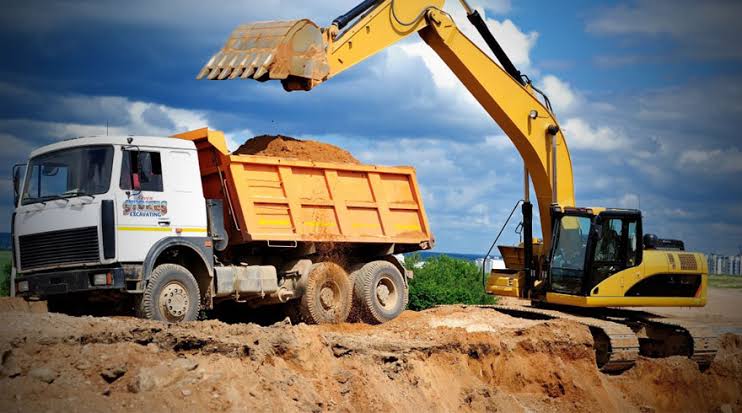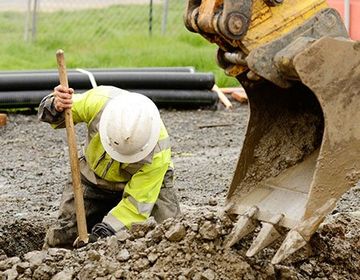Septic Ohio - Comprehensive Septic System Services in Ohio
Septic Ohio - Comprehensive Septic System Services in Ohio
Blog Article
Unveiling the Art of Excavation: Pro Tips for Safe and Productive Excavating
As soil is turned and earth is relocated, the intricacies of excavation disclose themselves, requiring an eager understanding of devices, dirt make-up, safety and security procedures, and ecological factors to consider. The know-how needed to navigate these aspects successfully can mean the difference between an effective excavation job and a potential disaster.
Value of Appropriate Devices
To make certain the security and performance of any kind of excavation project, making use of the appropriate equipment is paramount. The right tools not just improve performance yet likewise mitigate risks related to digging. Excavation projects vary in scope and intricacy, varying from small domestic landscape design work to massive building undertakings. No matter the task size, having the appropriate tools can make a considerable difference in the outcome.
These flexible machines come in numerous dimensions to suit different job needs. Miniature excavators are optimal for smaller sized jobs, while bigger excavators tackle extra extensive jobs successfully.
Apart from excavators, various other critical devices includes dump excavators, trenchers, and vehicles. Dump trucks are essential for getting rid of and moving excavated products, while plates are made use of for excavating slim and deep trenches. Bulldozers stand out in jobs that require pressing big quantities of dirt or particles. By purchasing the ideal devices, excavation jobs can be finished safely, on time, and with precision.
Understanding Soil Composition
An extensive grasp of dirt structure is fundamental for executing excavation tasks with accuracy and safety and security. Understanding the various kinds of soil is essential as it straight impacts excavation techniques, equipment selection, and overall task efficiency. Soil composition usually includes 4 main elements: sand, silt, clay, and raw material. Each component has unique residential or commercial properties that affect how dirt responds to excavation procedures.
Sand bits are the largest and provide good drainage but provide little cohesion. Silt fragments are smaller than sand however larger than clay, supplying moderate water drainage and communication. Clay particles are the tiniest and give high cohesion yet poor drainage. Raw material, such as rotting plant material, influences dirt fertility and security.
Before beginning excavation, performing dirt tests to establish its composition and features is crucial. This info assists in choosing the ideal tools, applying precaution, and creating excavation techniques customized to the details soil problems - lancaster excavation. By comprehending dirt composition, excavation specialists can enhance job results while making sure security and adherence to best techniques
Safety Measures and Protocols
Comprehending soil make-up is the foundation upon which precaution and methods for excavation tasks are built, making sure the health of workers and the success of the venture. When it involves safety throughout excavation, there are a number of crucial steps that must be executed to mitigate threats and avoid crashes.
Primarily, prior to any type of excavating starts, a thorough evaluation of the website should be conducted to recognize any type of possible dangers such as underground utilities, unstable soil problems, or close-by structures that can pose a threat. It is essential to have a competent individual oversee the excavation procedure to make certain that all security protocols are complied with purely.
In addition, all Read Full Report workers associated with the excavation should be effectively learnt safe digging practices and the proper operation of devices. Individual protective tools (PPE) such as hard hats, high exposure apparel, handwear covers, and safety boots should be put on in all times to minimize the danger of injuries. dump truck companies in ohio. Routine security conferences and toolbox talks must additionally be performed to maintain all employees notified regarding possible dangers and reinforce secure job practices. By adhering to these security actions and protocols, excavation jobs can be completed successfully and without event.
Effective Excavation Planning
When beginning on an excavation job, meticulous planning is crucial to ensure efficiency, security, and successful results. Reliable excavation preparation involves numerous key actions that are critical for the smooth implementation of the job.
Once the site evaluation is full, the next step is to create a clear timeline and routine weblink for the excavation activities. This includes figuring out the sequence of jobs, devices requirements, and manpower allotment. Proper organizing helps prevent hold-ups and makes certain that the project remains on track.

In addition, interaction amongst all employee is paramount during the planning stage. Clear instructions, regular updates, and effective coordination are important for a successful excavation project. By investing effort and time in thorough preparation, excavation groups can significantly enhance efficiency, lessen threats, and attain successful end results.

Handling Environmental Factors To Consider
With boosting emphasis on ecological sustainability in building techniques, handling environmental factors to consider has come to be a crucial aspect of excavation tasks. Excavation activities have the possible to affect the surrounding setting with dirt erosion, debris runoff, environment disruption, and contamination of water resources. To mitigate these threats, it is important to carry out best practices that prioritize environmental security.

In addition, correct waste monitoring is crucial to avoid soil and water contamination. Implementing procedures for the disposal of hazardous products, recycling of waste products, and decreasing the usage of dangerous chemicals can dramatically lower the ecological impact of excavation tasks. By integrating these methods into excavation planning and implementation, building and construction firms can make sure that their jobs are not only safe and effective however likewise ecologically accountable.
Conclusion
Finally, understanding the art of excavation needs a complete understanding of appropriate equipment, dirt composition, precaution, and effective preparation. By following these standards and considering ecological factors, excavations can be conducted securely and successfully. It is vital to prioritize security and productivity in every excavating project to make sure successful outcomes.
As dirt is turned and planet is moved, the ins and outs of excavation reveal themselves, requiring a keen understanding of tools, soil make-up, security methods, and ecological considerations.To make certain the security and efficiency of any excavation job, utilizing the my review here proper equipment is extremely important.An extensive grasp of dirt structure is fundamental for implementing excavation jobs with accuracy and safety. Comprehending the various kinds of soil is critical as it directly affects excavation approaches, equipment choice, and total task performance. By understanding dirt make-up, excavation experts can enhance job end results while making certain safety and security and adherence to finest practices.
Report this page